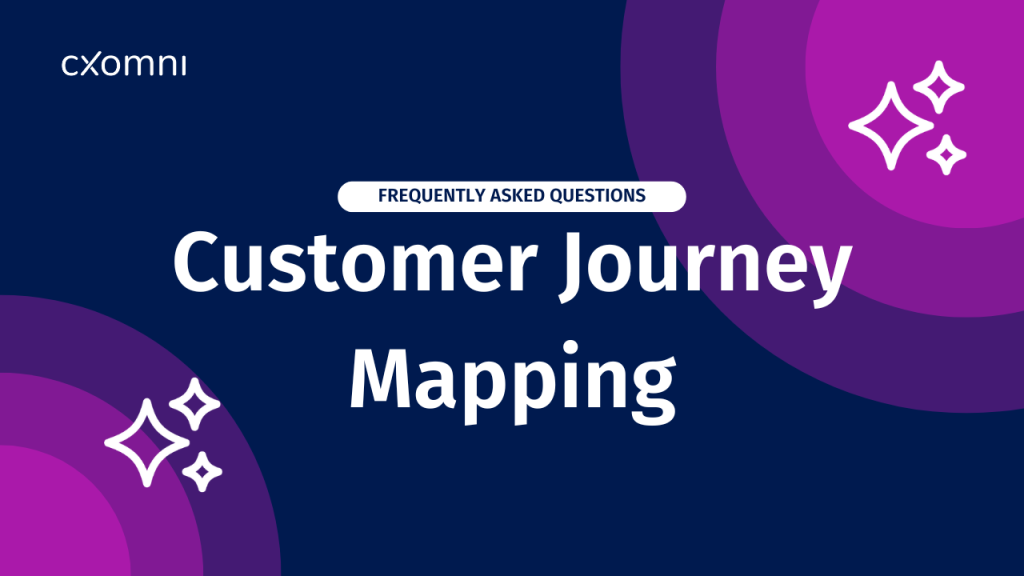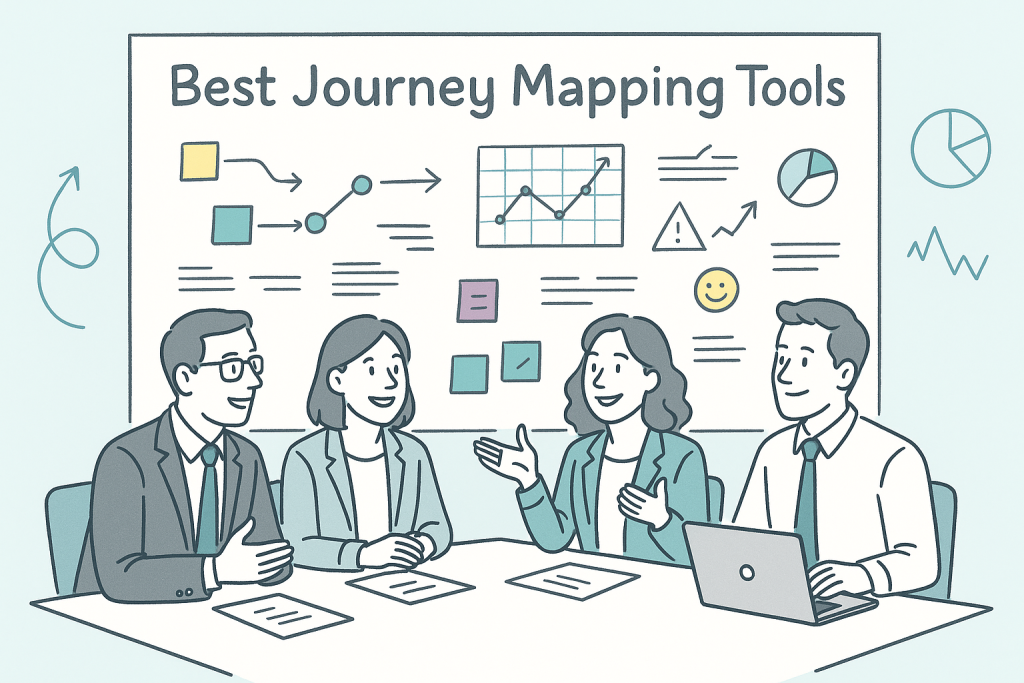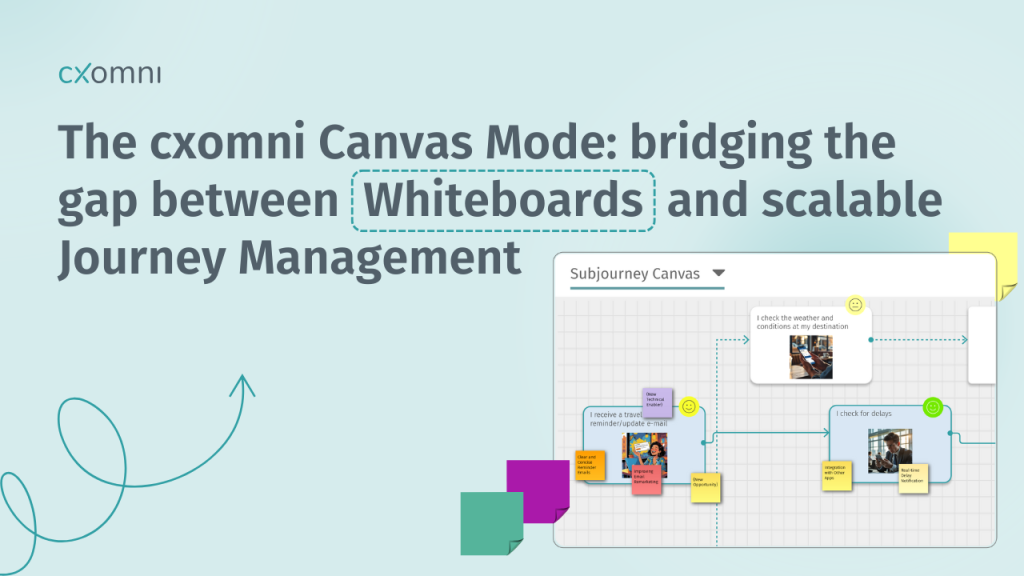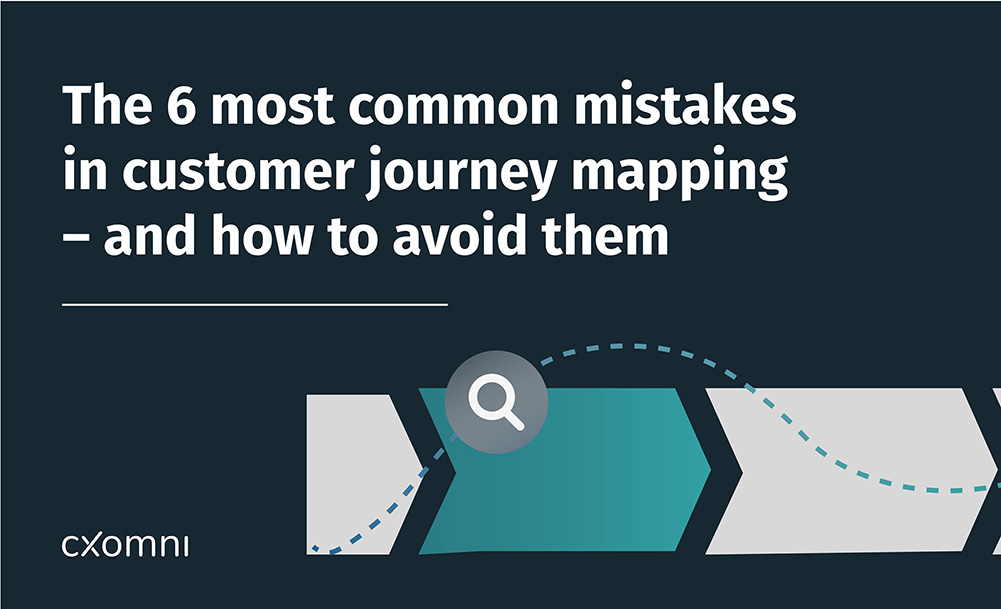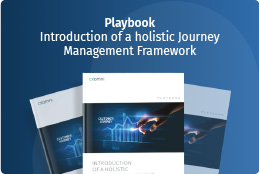Introduction
Customer journey mapping is one of the most powerful ways to understand and improve the customer experience. By visualizing every touchpoint, businesses can uncover pain points, align teams, and identify new opportunities for growth. This FAQ brings together the most common questions about customer journey mapping — from its purpose and challenges to data, ROI, and industry applications. Each answer also shows how cxomni helps transform static maps into living, data-driven journey management systems that scale across organizations.
Table of Contents
Basics of Journey Mapping
What is customer journey mapping?
A customer journey map is a visual representation of the steps, interactions, and emotions a customer experiences when engaging with a company. It helps organizations understand what customers are trying to achieve, where friction occurs, and how to improve the experience.
Definition (NN/g): “A journey map is a visualization of the process that a person goes through in order to accomplish a goal” (Nielsen Norman Group).
Key distinction: Journey maps are not only diagrams; they are collaborative tools for aligning teams around customer experience.
With cxomni, journey mapping goes beyond simple diagrams. It becomes a living system, fueled by real-time data and integrated into your CX strategy, ensuring that maps are always accurate and actionable.
Why is customer journey mapping important for businesses?
Journey mapping is critical because it highlights how customers actually experience your brand.
Research consistently shows that good customer experience (CX) drives growth:
Companies that lead in CX outperform laggards by nearly 80% in revenue growth over competitors (Forrester, 2021).
86% of buyers are willing to pay more for a great customer experience (PwC, 2018).
Journey maps make these outcomes possible by:
Revealing gaps between expected and actual experience.
Highlighting pain points and opportunities for efficiency.
Providing a shared “north star” for cross-functional teams.
How does customer journey mapping improve customer experience?
Customer journey mapping improves CX by helping organizations identify where customers struggle and where they succeed. By making “moments of truth” visible, companies can redesign processes to reduce effort, improve clarity, and create more positive emotions—ultimately driving loyalty.
Research shows that minimizing customer effort is one of the strongest predictors of loyalty (Harvard Business Review).
Journey maps align internal teams around shared goals, ensuring that CX initiatives are based on customer evidence, not assumptions.
With cxomni, improvements are not based on guesswork. Its integration with analytics, CRM, and feedback systems ensures that CX enhancements are tied to real customer behavior and outcomes.
Challenges & Pitfalls
What are the common challenges with traditional journey mapping?
The biggest challenges are:
Static maps: Once created, they quickly become outdated.
Silos: Marketing, sales, and service teams often map journeys separately.
Lack of data connection: Many maps are built on assumptions rather than customer insights.
cxomni solves these problems by providing data-driven, collaborative, and scalable journey management. Instead of being a one-off exercise, your maps stay alive, continuously updated, and linked to measurable KPIs.
How long does it take to build and implement a journey map?
Traditionally, building a journey map could take weeks of workshops, interviews, and manual data collection. Implementation often stretched even longer as teams aligned on insights and rolled them out across departments.
With Journey AI by cxomni, this process is dramatically accelerated. By automatically analyzing data from your CRM, analytics, and customer feedback systems, Journey AI can generate accurate, data-driven journey maps in minutes. Teams then refine and validate these drafts, cutting the time needed for alignment and decision-making.
Full implementation timelines still depend on scope and complexity:
Simple use cases: 1–2 weeks to go live.
Mid-sized organizations: 4–8 weeks for pilot and adoption.
Large enterprises: 6–12 weeks for multi-region rollout and governance.
The key advantage is that with cxomni and Journey AI, companies get a quick, data-backed starting point instead of a blank canvas, enabling faster rollouts and continuous optimization without constant remapping.
Data & Technology
What types of data should be used in journey mapping?
Effective journey mapping combines:
Quantitative data (clickstream analytics, NPS, churn rates).
Qualitative insights (interviews, surveys, call transcripts).
Operational data (response times, resolution rates).
cxomni makes it easy to bring all these data streams together in a centralized platform, so decisions are evidence-based and maps reflect reality, not assumptions.
How does customer journey mapping support SEO and digital marketing?
Customer journey mapping provides insight into the search and decision-making behavior of customers. It helps marketers:
Align content strategies with actual customer questions.
Optimize landing pages for different journey stages.
Identify geo-specific search trends.
Connect SEO performance with CX outcomes.
cxomni makes this even more powerful by integrating analytics directly into maps, helping teams connect digital performance with customer journeys.
How does customer journey mapping scale in global organizations?
Scaling journey mapping across multiple countries or regions requires consistency and flexibility. Organizations must adapt to local behaviors, languages, and regulations while maintaining a unified customer experience strategy.
cxomni is designed for this challenge. It allows global templates with localized variations, supports multi-language content, and ensures compliance with data privacy laws (e.g., GDPR, CCPA). This makes it ideal for enterprises with diverse, international markets.
ROI & Business Impact
Can customer journey mapping show ROI?
Yes. Journey mapping should not just visualize customer paths; it should connect directly to business outcomes. Companies can measure ROI by tracking improvements in:
Customer satisfaction and loyalty.
Reduced churn and service costs.
Increased cross-sell and upsell conversions.
cxomni enables this by linking journey stages to KPIs and financial metrics, providing clear evidence of how CX improvements drive business growth.
How can customer journey mapping reduce churn?
Churn often happens when customer expectations are not met. Journey mapping highlights where dissatisfaction begins — such as long onboarding processes, poor support, or unclear communication.
With cxomni, companies can pinpoint churn hotspots, monitor them in real time, and design proactive interventions (like tailored offers, reminders, or follow-ups) to reduce customer loss and increase retention.
Industry Applications
What industries benefit most from journey mapping?
Almost every industry can benefit, but especially:
Telecommunications & Utilities (complex omnichannel support).
Banking & Insurance (onboarding, compliance, retention).
Retail & eCommerce (personalization, loyalty optimization).
Healthcare & Pharma (patient experience).
Travel & Hospitality (multi-touch, global journeys).
SaaS & Tech (onboarding, adoption, renewals).
cxomni adapts its journey management capabilities to each industry, making it easier to apply best practices and scale solutions.
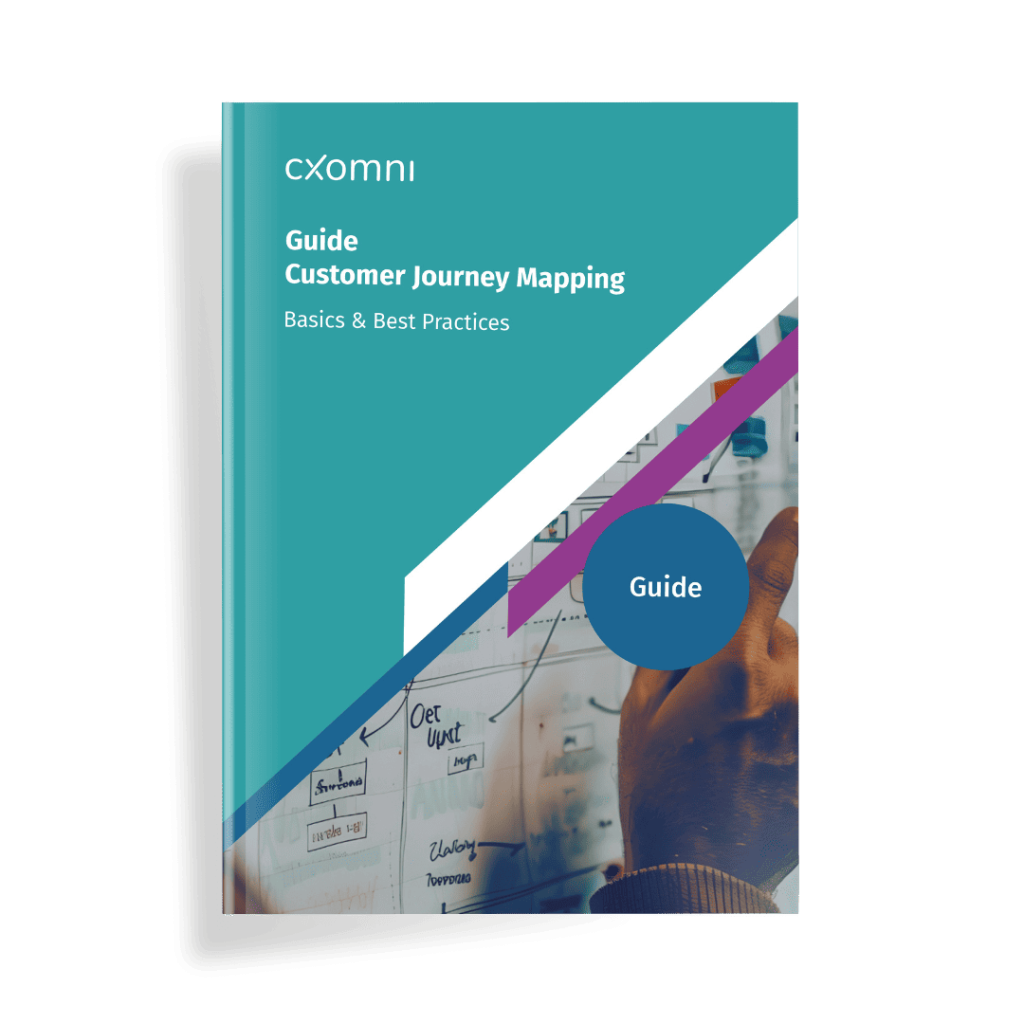
Free Customer Journey Mapping Guide
Learn about the key elements of customer journey mapping and benefit from numerous practical tips that make getting started easier for you.
